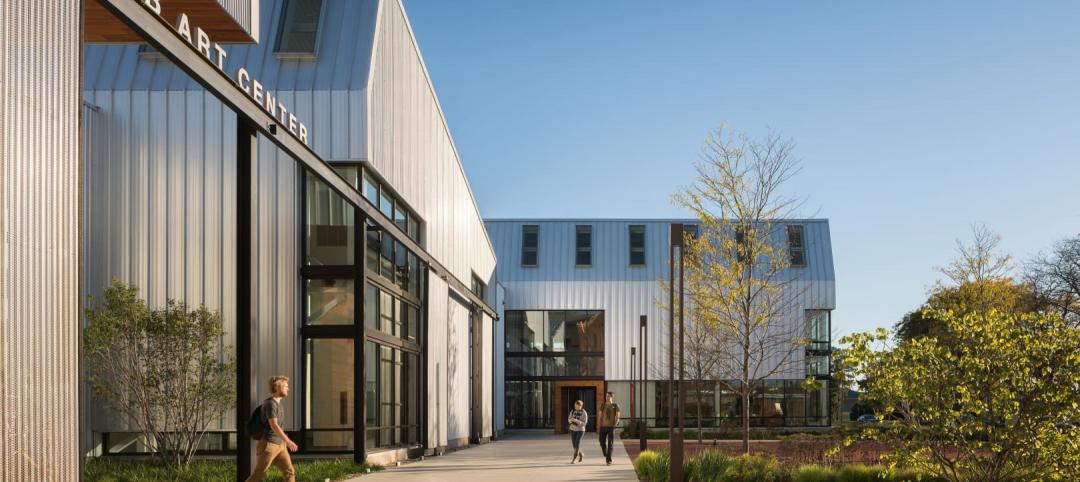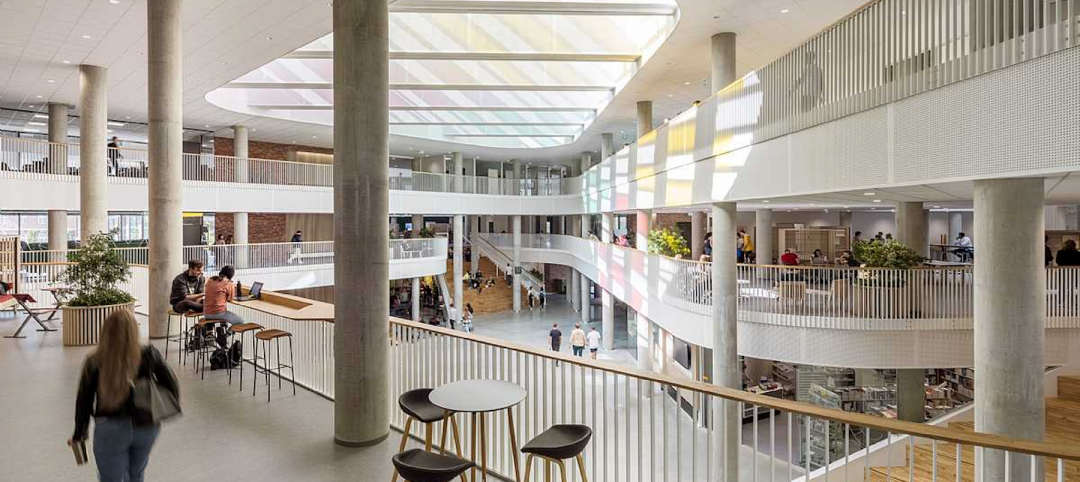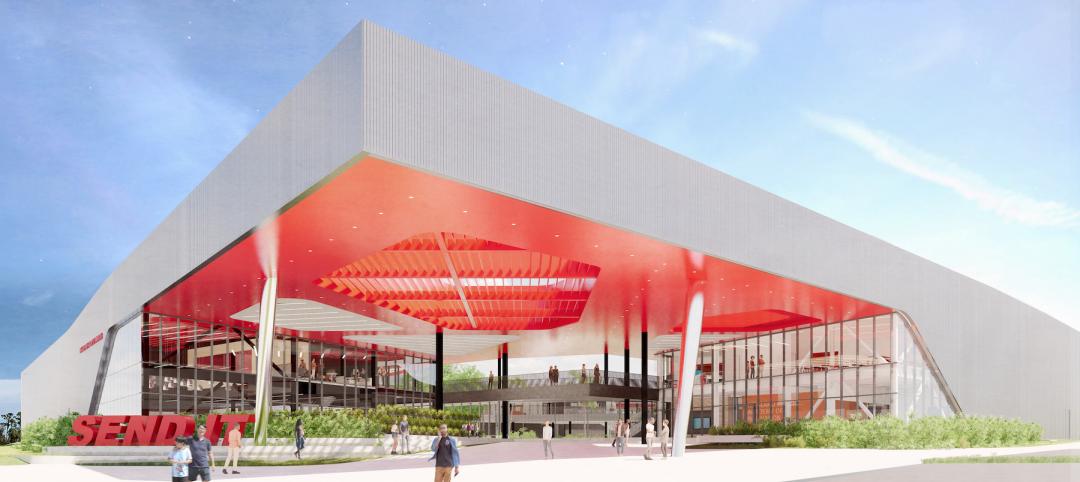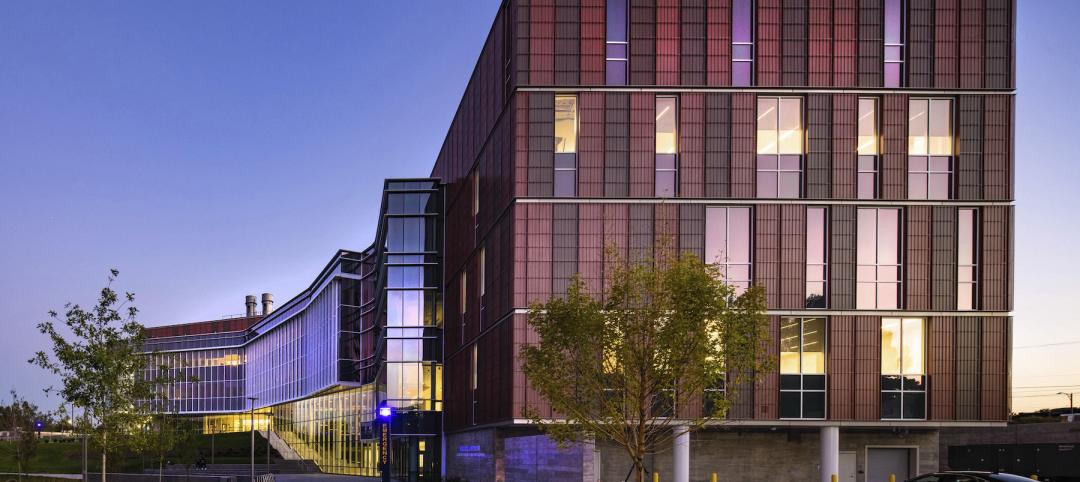Over a five-day stretch last December, students at the Carroll School in Lincoln, Mass., witnessed the installation of a modular classroom building like no other.
The new 950-sf structure, which will serve as the school's tutoring offices for the next few years, is loaded with sustainable features like sun-tunnel skylights, doubled-insulated low-e glazing, a cool roof, light shelves, bamboo trim, low-VOC materials, daylight and occupancy sensors, and a quiet, high-efficiency ventilation system.
The relocatable classroom, named SmartSpace by its creators, is one of a number of high-performance modular classrooms to emerge on the market during the last few years, and it's the first LEED-level unit to be installed in the U.S.
“With SmartSpace, we wanted to rethink typical modular design and construction approaches for classroom buildings,” says Mark N. Dolny, AIA, senior associate with ARC/Architectural Resources Cambridge, which teamed with modular manufacturer NRB Inc., Ephrata, Pa., and Littleton, Mass.-based modular leasing company Triumph Leasing Corp. to develop the SmartSpace design.
Dolny says simple additions like a double-door entry vestibule and expansive exterior glazing (6x16 feet) go a long way toward reducing energy consumption and improving the interior classroom environment.
“Most modular classrooms don't have vestibules, so conditioned air instantly leaks out when people come and go,” says Dolny. A recent energy study of SmartSpace conducted by The Hickory Consortium, Harvard, Mass., confirms the team's theory on the importance of vestibules: “It was one of the biggest factors in the energy study,” says Dolny, adding that the unit beat Massachusetts state energy code by 56% during testing.
The SmartSpace team was careful to keep the concept “realistic and reasonable” as it pertains to first cost, shipping logistics, and constructability, according to Philip L. Laird, AIA, principal with ARC, who collaborated on the design.
“We wanted to make sure this was a doable project and not just a pretty poster that got stuck in a drawer somewhere,” says Laird. “The solution had to be something that NRB could easily build in its shop and ship to the site.”
To that point, the design team worked closely with NRB and Triumph to stay within the size constraints and material specifications for a typical modular classroom. Common materials such as corrugated steel siding, medium-density fiberboard walls, and TPO roofing were specified over more complicated, labor-intensive solutions, like vegetated roofing. Also, dimensions were limited to 25 feet wide, 38 feet long, and 15 feet high to ease shipping to the site and installation. The building is shipped in two pieces. Once connected, the structure is strong enough to permit relocation of the classroom in one piece.
The team also excluded exotic technologies like solar and wind power for fear that school districts would balk at the higher first cost.
“We played with the idea of taking the building completely off the grid with photovoltaics, but PVs are still an expensive technology,” says Dolny. The fact that many modular classrooms are leased works against solar and wind power, he says. “If school districts are leasing, they don't have a 20-year payback to work with, and they can't get tax credits or grants to help pay for the systems.”
Project FROG makes leaps in California
In California, another high-performance modular classroom venture, Project FROG (BD+C May 2006, p. 9), is making inroads of its own.
The company is working on its first installation, a 9,500-sf child development center at the City College of San Francisco, to be completed this summer. The development will incorporate 10 of the firm's Dragonfly and Turtle “green” modular units interconnected to form a campus with classrooms, work areas, office space, reading rooms, a preschool, and motor skills areas for both preschoolers and toddlers.
Project FROG spokesperson Nikki Tankursley says the company is in talks with several other colleges about building similar child development centers. “We've also gotten calls from major Silicon Valley corporations looking to build child development centers for their employees,” says Tankursley. “I think we're on to a nice market here.”
In addition, the company received news late last month that its modular units are now “pre-check” approved by the Division of the State Architect. That means that school districts and community colleges that wish to install Project FROG modules will get expedited permitting and approvals from the DSA.
“Having DSA PC approval tells administrators these buildings meet tough structural, life safety, and environmental standards,” said Leela Gill, COO with Project FROG, a collaboration between San Francisco-based design firm MKThink and B&H Engineering, a San Carlos, Calif.-based manufacturing firm.
The company's modular units, which range in size from 1,000 sf to 1,700 sf, also meet the high-performance school requirements of California's Collaborative for High Performance Schools program, exceed the state's Title 24 energy requirements, and are LEED certifiable. Green features include abundant daylight (up to 800 sf of glass in a single module), T5 or T8 high-efficiency fluorescent lighting, occupancy and daylight sensors, recycled acoustical ceiling tiles with a minimum NRC of 0.60, no-VOC carpet, and recycled rubber flooring.
Related Stories
Education Facilities | Apr 28, 2022
ProConnect Education (K-12 to University) comes to Scottsdale, AZ, Dec 4-6
ProConnect Education 2022 will attract building product specifiers and manufacturers to the Andaz Resort in Scottsdale, Ariz., in December.
Multifamily Housing | Apr 26, 2022
Investment firm Blackstone makes $13 billion acquisition in student-housing sector
Blackstone Inc., a New York-based investment firm, has agreed to buy student-housing owner American Campus Communities Inc.
Architects | Apr 22, 2022
Top 10 green building projects for 2022
The American Institute of Architects' Committee on the Environment (COTE) has announced its COTE Top Ten Awards for significant achievements in advancing climate action.
University Buildings | Apr 18, 2022
SmithGroup to design new Univ. of Colorado Denver engineering, design, computing building
The University of Colorado Denver selected SmithGroup to design a new engineering, design, and computing building that will serve as anchor of new downtown innovation district.
Market Data | Apr 14, 2022
FMI 2022 construction spending forecast: 7% growth despite economic turmoil
Growth will be offset by inflation, supply chain snarls, a shortage of workers, project delays, and economic turmoil caused by international events such as the Russia-Ukraine war.
Projects | Apr 1, 2022
University complex encourages exchange between academics and residents
In the small Danish city of Horsens, C.F. Møller Architects has created a university complex that unites higher education with urban life—creating synergies among students, staff, businesses, and residents
Projects | Mar 31, 2022
Tech school designed to prepare students for high-wage, high-skill careers
In Wesley Chapel, Fla., a half-hour north of Tampa, Kirkland Ranch Academy of Innovation (KRAI) is “not going to look like anything you’ve ever seen before,” Kim Moore, assistant superintendent at Pasco County Schools, said in a statement.
Energy-Efficient Design | Mar 25, 2022
University of Pittsburgh Releases ‘Pitt Climate Action Plan’
The University of Pittsburgh has released the Pitt Climate Action Plan, detailing how the University will achieve its goal to go carbon neutral by 2037 through investments in clean energy, transportation, efficiency and other areas.
Higher Education | Mar 24, 2022
Higher education sector sees 19 percent reduction in facilities investments
Colleges and universities face a growing backlog of capital needs and funding shortfalls, according to Gordian’s 2022 State of Facilities in Higher Education report.
Projects | Mar 16, 2022
Tomorrow’s STEM leaders get a state-of-the-art research complex
In February, North Carolina Agriculture and Technical State University (NC A&T) opened its new Engineering Research & Innovation Complex (ERIC).
















